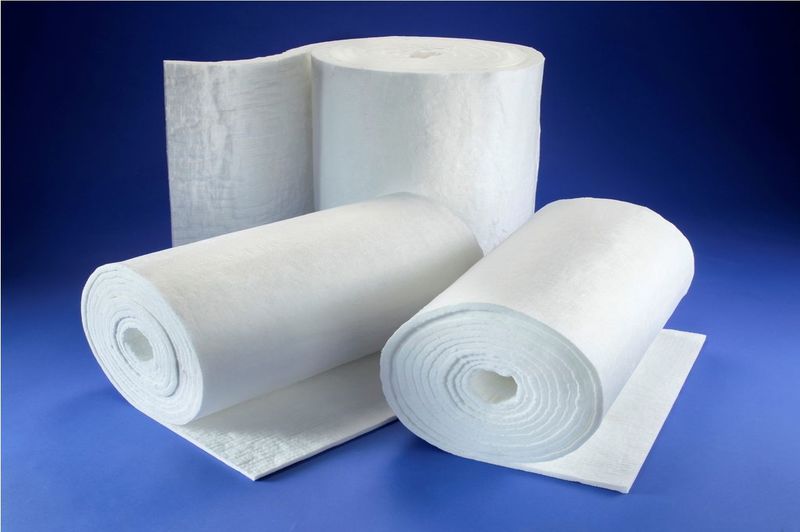What does a ceramic blanket do?

If you are looking for an item that will protect your equipment from the effects of the high-temperature operation, having a ceramic blanket is a must!
There is a guaranteed improvement in efficiency that can be observed in the long term.
Ceramic blankets also have excellent strength, which makes them able to protect your equipment.
Continue to browse this article as we mention what a ceramic blanket is, its properties, and how you can avoid its deformation.
What Is A Ceramic Blanket?
A ceramic blanket is known for its ability to provide exceptional handling strength in protecting high-temperature insulation applications.
They are binder-free and re needled. It is offered in three standard grades such as the commercial, high purity, and zirconia grade.
These three are all lightweight and are thermally efficient materials.
They are known for having the advantage of complete resistance to thermal shock and low heat storage.
It also varies in dimensions, temperature settings, and different applications.
There are specific ceramic blankets, like those made from polycrystalline mullite wool, that do not have binders, additives, or shot content.
It is famous for being resistant to corrosive agents in both reducing and oxidizing temperatures.
Ceramic blankets manufactured from this type of wool are highly specialized for equipment that require extreme temperatures.
Ceramic blankets made from wet wool are composed of inorganic bonding agents.
To retain its wet binder during shipping and storage, it is placed in a transparent polyethylene bag.
It is manufactured for complex insulating shapes under high hot gas velocities.
Its outcome leads to flexible insulation that forms complex shapes and uses air dry to form a rigid, complex structure.
As time goes by, ceramic blankets aim to develop much broader applications with the help of innovation and technology.
If the production and usage are good in processing and preservation, the blanket will achieve the best high-temperature resistance performance.
What Does A Ceramic Blanket Do?
Ceramic blankets are made of pure materials at a high temperature, which is the foundation for their insulation capacities.
Because of the following properties, it has become famous as a must-have material for manufacturing companies.
Heat resistant
Organic adhesives are not used in ceramic blankets.
The surfaces are smooth because of the high temperatures used, which fuses the bonds of the material.
It allows the blanket to prevent the absorption of heat and resist high temperatures.
It can also absorb other impacts which are forceful such as sound or even projectiles.
Lightweight
Being light-weighted is another property of a ceramic blanket due to its fibrous construction.
This makes the blanket flexible and can easily adjust to the shapes and surface of the equipment that needs to be protected.
There is a ceramic fiber that can provide the needs for the required thickness and design.
It will be based on the density of the fabric and the pressure it can withstand during its service life.
Multi-use capacity
Aside from the previously mentioned properties, ceramic blankets are also used for generators, furnaces, boilers, kilns, and turbines.
The blanket can also be cut up and attached as seals, insulators, or gaskets for specific purposes in smaller applications.
It is referred to as a do it all kind of material because aside from being heat resistant. It is also soundproof and projectile-proof.
The blanket provides little to no issue because of its property of being lightweight when installing.
It also provides the ideal insulation capacity in large and small applications or equipment.
These properties make a ceramic blanket admirable for any manufacturing company to acquire this and utilize its benefits.
How to avoid the deformation of a ceramic blanket?
Every material needs the proper way to keep and maintain its best quality to offer.
Deformation can happen on your ceramic blanket, but it can be prevented. As the saying goes, “prevention is better than cure.”
You need to reduce the moisture content of your ceramic blanket and reduce its weight by distributing it evenly.
Stack it horizontally and ballast after pressing. The ceramic blanket’s direction must be parallel to the substrate where there is less swelling direction.
It would be best to remember that the central portion should be loose when the blanket is already stuck.
To maintain the softness of the layer and improve hot-pressing conditions in production, you must reduce the amount of urea-formaldehyde resin.
Lastly, to save your ceramic blanket, the environment must be dry, not humid, and there is no water.
During rainy days, buildings tend to become watertight, and there is now water seepage which can keep the indoor environment dry.
If your ceramic blanket meets the water, it will deform because the hardness immediately becomes low.
Conclusion
Ceramic blankets have high strengths, excellent support force, and superior high-temperature performance.
However, what does a ceramic blanket do? It is usually required for high-temperature refractory products because it serves as protection.
There are many benefits and properties which are utilized by manufacturing companies.
It is heat resistant, light-weighted, and has multiple use capacities.
It would be best if you also kept in mind that ceramic blankets can be deformed, so it is essential to know how they can be prevented to maintain their best performance.
